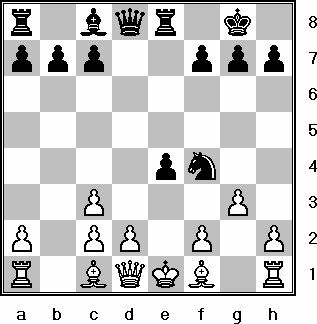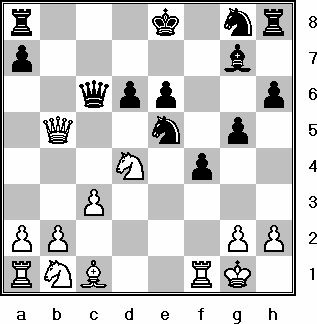|
Lesson
#15
Looking For A Good
Book?
I have to admit, I don’t like most chess books. I find them dry and dull.
Filled with long-winded analysis, most of us get lost in their details.
Nevertheless, chess books are essential to the growth of aspiring young chess
players.
Fortunately there are some great chess books out there. Or, perhaps I should
say: There are some great chess authors out there. And, as a rule, these authors
aren’t grandmasters. Rather, they are gifted teachers who love chess. So, here
are my recommendations to chess kids, chess moms, chess dads and chess coaches.
|

|
#1 Black to move
|
Buy any book by the British school teacher and chess master John N. Walker.
They are perfect for young players under 1200. His books are fun and
informative. By mixing instruction and quizzes he frequently gives the student a
chance to test his new knowledge.
Below is an example problem from Test Your Chess. Notice how white’s
king is stuck in the center. What can black do to take advantage of this?
Here are some Books by John Walker
- Chess for Tomorrow’s Champions
provides an entertaining and amusing
introduction along with historical tidbits.
- Winning on the Openings
shows how to take advantage of your opponent’s
mistakes. This is a great way to learn openings.
- Attacking the King
shows how to build up what Walker calls
"fire-power." This is a killer middlegame book.
- Test Your Chess: Piece Power
has got lots of problems well suited for
junior instruction.
Walker’s books never let me down. With lots of puzzles that aren’t too
hard, they are great tools for any chess coach. Chess kids and coaches will also
enjoy these fine authors:
|

|
#2 Black to move
|
Paul Littlewood’s Check Tactics is an outstanding exploration
of the main tactical motifs. He explains overloading, deflection, decoying
better than ever. If you only get one book on tactics, this is the one. In the
example below from Check Tactics how does black remove the defender?
CJ.S. Purdy’s Guide to Good Chess is truly a classic for both
young and old chess players. Purdy explains chess like no one else. Learn Purdy’s
rules and discover why Bobby Fischer considered Purdy the world’s greatest
chess author.
Andrew Soltis’ Grandmaster Secrets – Endings is the most
enlightening book I’ve ever read. True, Soltis is a grandmaster himself. (As
with chess, all rules have their exceptions.) Journey with fictitious GM Noah
Tall as he guides you through what you always wanted to know about chess
endgames. This book is challenging but don’t let that stop you. If you can’t
follow the grandmaster examples you’ll still love the story, the art and the
quotes. ("The older I get, the more I value pawns." – GM Paul Keres)
Irving Chernev’s The Most Instructive Games of Chess Ever Played truly
lives up to its title. It includes 62 masterpieces of chess strategy. If you
have a rating of 1000 or higher then study this book and I guarantee you will
improve your chess. If I could only have one chess book this would be it.
So go to your local bookstore, search the web or give USCF a call. Get
anything John Walker writes or any of the above books and let these fine authors
take you "beyond the 64 squares." Happy reading to all.
Answers
#1 – Black breaks open the e-file with 1. … Nd3+ One possible finish is
2. Bxd3 exd3+ 3. Kf1 Bh3+ 4 Kg1 Qd5 5 f3 Qc5#. Similar is 2. cxd3 exd3+ 3. Be2
Rxe2+ 4. Kf1 Bh3+ with mate soon.
#2 – Black wins with 1. … Nf3+ After 2. Rxf3 Bxd4+ wins the queen. Or,
after 2. Kh1 Nxd4 simply wins a peace. Very pretty.
Home Page ·
More Lessons
(c) 2001 Ross Stoutenborough
|